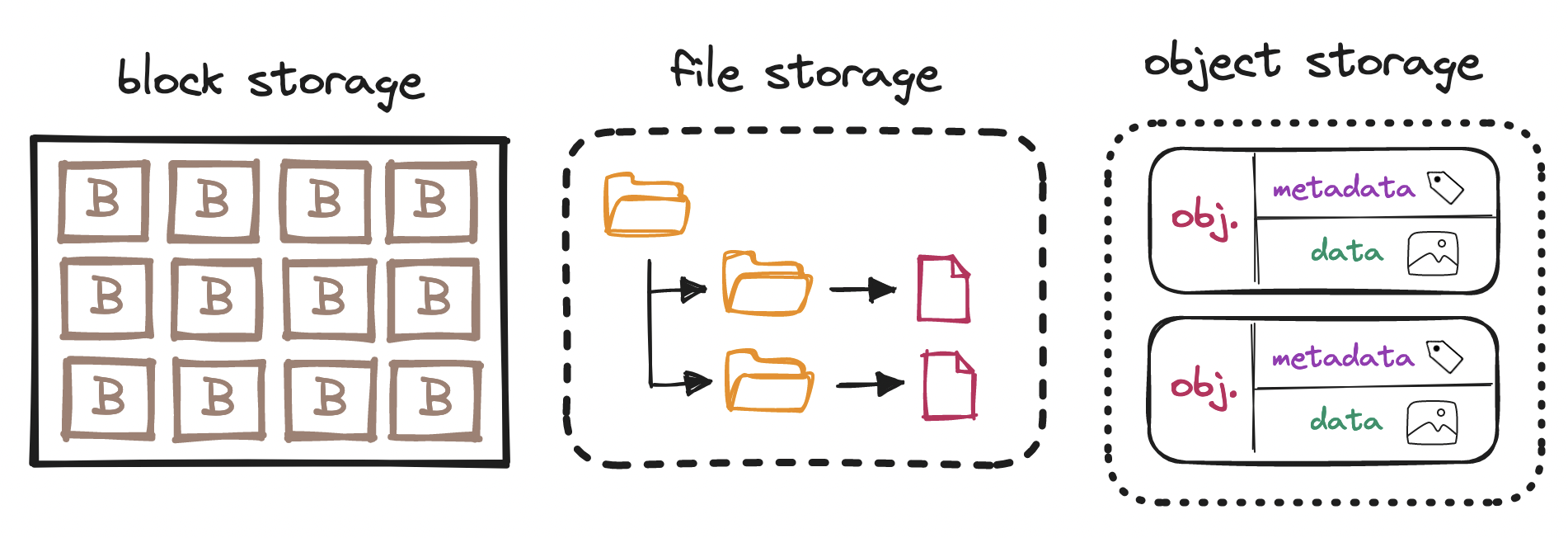S3 (Simple Storage Service) is a widely adopted cloud-based object storage system that allows data to be stored and accessed as discrete objects, each associated with both the actual data content and metadata.

Figure 1:Storage types comparison
Unlike traditional file systems, S3 operates over the HTTP protocol along with API’s, making it highly scalable and accessible across distributed systems. It supports fine-grained access control, enabling secure, policy-driven access to individual objects. UCA has provided a 1TB S3 endpoint to help users become acculturated to this technology with a CEPH backend.
Additionally, S3 API supports HTTP range requests[4], allowing users or applications to retrieve specific fragments of a file, using byte ranges, without needing to download the entire file. This is an essential feature for large-scale scientific datasets and cloud-native workflows. This feature is notably used in particular by the Volcano Space Observatory to optimize access to a specific satellite image from a TIFF file supplied by Copernicus Data Space Ecosystem.

Figure 2:HTTP range requests